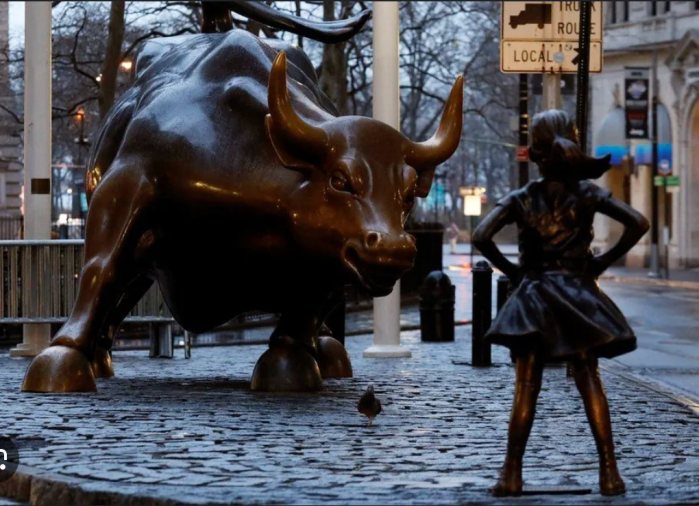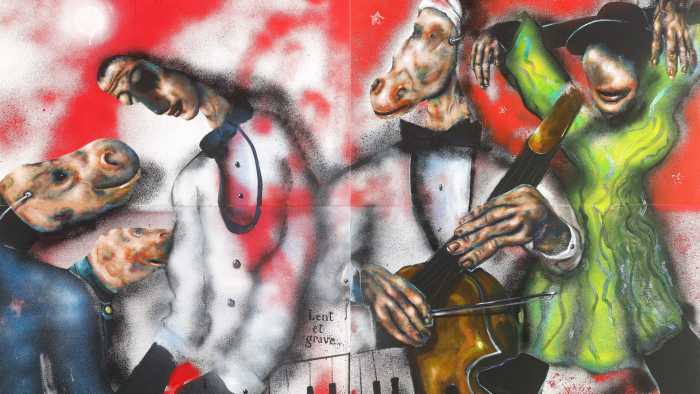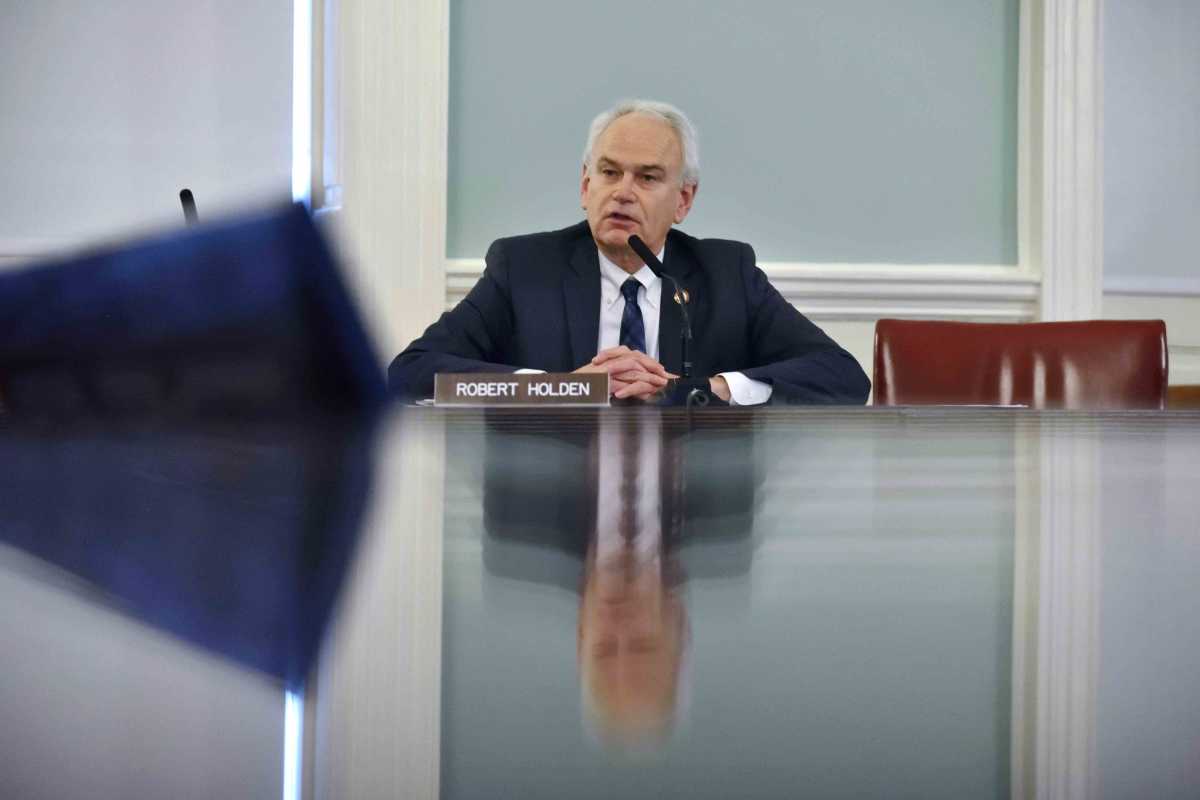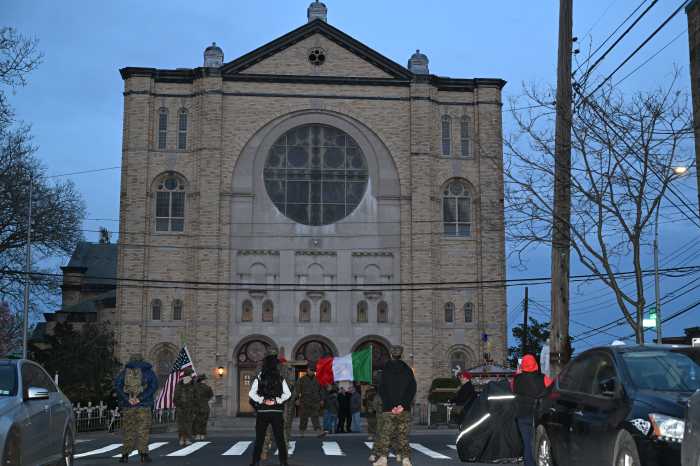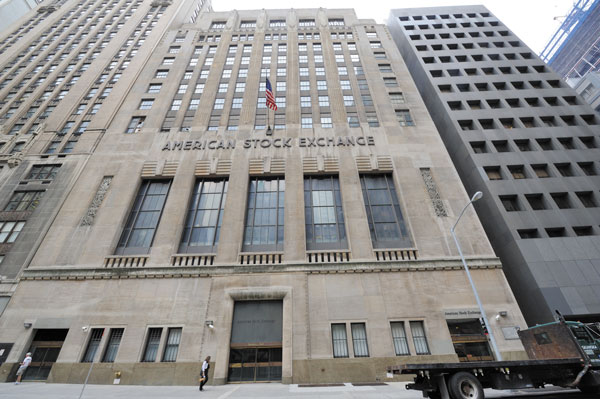
BY TERESE LOEB KREUZER | “Downtown is the most historic part of the city,” said Mary Dierickx, historic preservation consultant, addressing the members of Community Board 1’s Landmarks Committee at the committee’s monthly meeting on July 14. She said that she and other preservationists were “alarmed” at the continuing destruction of Lower Manhattan. “The American Stock Exchange building, incredibly, is not at this time a designated New York City landmark,” she said.
She was taking up the cudgel for the grand building at 86 Trinity Place, which goes through the block to Greenwich Street and housed the stock exchange, and its predecessors, the New York Curb Market and the New York Curb Exchange, from 1921 until 2008, when the New York Stock Exchange Euronext bought the American Stock Exchange and Amex closed. Dierickx also wanted to draw the committee’s attention to the 10-story building next door to the American Stock Exchange at 125 Greenwich St. Built for Western Electric in 1888-1889, this is where some of the first telephones were manufactured. The American Stock Exchange bought that building in the 1980s and converted it to offices.
In February 2011, investor Michael Steinhardt and a partner, Allan Fried, bought both buildings for $65 million and announced plans to tear down the Western Electric building and convert the old Amex building into a retail complex and a 174-room boutique hotel.
“These two buildings are very significant and they should be preserved for future generations,” Dierickx said.
The American Stock Exchange building is the more imposing of the two. Prior to 1921, some brokers traded stock outdoors in the Financial District and were known as the New York Curb Market. Many small companies that later grew to behemoths were capitalized by the curbside brokers.
Deciding to emulate the New York Stock Exchange by moving indoors, the curb brokers hired the architectural firm of Starrett & Van Vleck to build them a permanent home. An article in The New York Times on Dec. 5, 1920 said the structure would cost around $1.3 million. It showed a drawing of the trading floor with its tall, arched windows and coffered ceiling.
The windows can still be seen on the Greenwich Street flank of the building along with the words “New York Curb Market” cut into the façade above them. The original structure was made of beige brick in the Classical Revival style. As the Curb Market prospered over the next decade, the brokers felt they needed more room. In 1929, they changed the name of their organization to the New York Curb Exchange and again hired Starrett & Van Vleck to create the expansion. The façade on Trinity Place is made of Bedford limestone and was literally erected in front of the old edifice, this time, in the Art Deco style that was the latest thing.
The date 1930 is deeply carved into the polished stone next to the entrance along with the names of the proud architects.
“The Western Electric building – how should I say this? – you have to work harder to see the significance,” said Dierickx. “It’s a rare surviving factory in Lower Manhattan. It’s an important example of an early transitional skyscraper. As you know from skyscraper history, the first skyscrapers were pretty short — like the Corbin building on Broadway — but they provided the base for later skyscrapers.”
The building is largely intact, Dierickx said. “It didn’t have a grand entrance. It had a factory entrance. It has a crenellated top, which is very Romanesque Revival in style.”
The architect, Cyrus Eidlitz (1853-1921) was well known at the time and with his partner, A.C. MacKenzie, designed a number of buildings that have become New York City landmarks, among them The New York Times building on Times Square from which a ball drops on New Year’s Eve.
Both buildings have been empty since the American Stock Exchange moved out. Peering through the grimy glass of the Amex building entrance, it is possible to discern the name “Amex” in lettering of the style popular in 1951 when the New York Curb Exchange changed its name to the American Stock Exchange. A sign tells visitors to check in at the Security Desk, though there have been no visitors in several years. Near the sign is an old-fashioned fan.
Though the American Stock Exchange is not a New York City landmark, it is on the National Register of Historic Places and is a National Historic Landmark, one of 261 buildings in New York State with this designation.
Following Dierickx’s presentation, Roger Byrom, chair of the C.B. 1 Landmarks Committee, said that he thought the plight of the two buildings in the Amex complex should be brought to the attention of the Landmarks Preservation Commission.
“We request an evaluation urgently,” he said, “and I do think we should mention that so many other important buildings in this part of Manhattan have been lost over the last 10 years.”
The Committee unanimously resolved to make this request.







